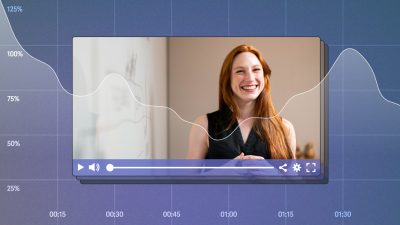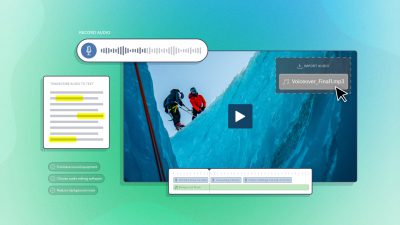Using video conferences to prescreen job candidates is not new, and has been happening since Skype and other platforms made it easy to connect with people through a webcam. A more recent trend is the use of pre-recorded videos in the application process, where, rather than writing out their responses to interview questions or a phone screen, a candidate has to submit a video of themselves instead. According to a recent article in Forbes, nearly 1 in 5 job candidates has participated in a video interview in the past year. Why are so many companies jumping on this video interview trend, especially for pre-screening candidates?
Efficiency
Companies face an ever-increasing deluge of resumes when they post opportunities online.

One highly effective way to reduce the pile is to ask for a little extra effort beyond clicking submit. The task of recording a video interview requires time, focus, and thought about the specific opportunity, helping to weed out less interested candidates. Also, a recruiter can quickly peruse several submissions at once, all addressing basic questions typically handled by phone screens, so they save time by not calling people individually. With less to sift through, the ability to review several at once, and a higher genuine interest level on the part of the candidates, companies gain efficiency on several fronts when leveraging video submissions in the interview process.
Decrease of Emphasis on Paper Resumes
The emerging preeminence of company culture over other factors for success means the paper resume has lost a lot of relevancy over the past 2-3 years, especially since the online world has given companies more ways to evaluate candidates’ personalities and aptitudes than a 2 dimensional sheet ever could. Auditions for jobs, where promising candidates receive a very short-term contract (e.g. 2-4 weeks) to do real work for a company, instead of an immediate full-time job offer, is part of this trend too. Companies get to find out not just if a person has the right skills, but also whether they mesh well with the existing team, and candidates get compensation and experience while “auditioning.”
Top Tips for Putting Your Best Foot Forward
- Dress as though you were at a regular interview: comfortable, fitted, professional clothing, and subtle make-up and jewelry if you choose to wear them.
- Check your frame for clutter, bad lighting, or visual distractions. Your potential employer does not need to see your cats chase each other, or the laundry piling up in the corner.
- Use your environment to your advantage. You get to interview in the comfort of your own home, so choose a place that makes you feel relaxed, has flattering lighting, and importantly, is very quiet with no background noises like a fridge, alarms, or air conditioner.
- Test your equipment(!!!). Make sure your computer has enough battery power, your webcam is properly installed, your internet connection is strong, and your microphone is working.
- Install any necessary software ahead of time and get comfortable using it so you can quickly navigate the menus and record video with ease.
- Customize or memorize the recording software shortcuts (record, pause, stop, etc) so you can use keyboard commands accurately. This will greatly speed up the process and help keep the focus on your message.
- Write out your key talking points, but avoid getting too detailed as the pressure of sticking to the script might interfere with your ability to quickly and naturally get the point across.
- Keep it succinct and be respectful of the time limits set by the company for submissions. If you keep going over, consider each talking point carefully, and whether it is truly critical to your message. If you are substantially under, you might want to consider embellishing a little to showcase your expertise.
- Speak slowly and clearly. Take a few deep breaths if you feel jittery or keep tripping over your words.
- Try to keep unnecessary fidgeting or shifting of your arms and body to a minimum. Relax and smile naturally to avoid looking stiff.
- Beware of bad lighting. Backlight, such as from a window, can turn you into a silhouette on camera. Overhead lights can create harsh shadows on your face. Angled, soft light from at least two points above your head illuminating your face should give you optimal results on camera.








